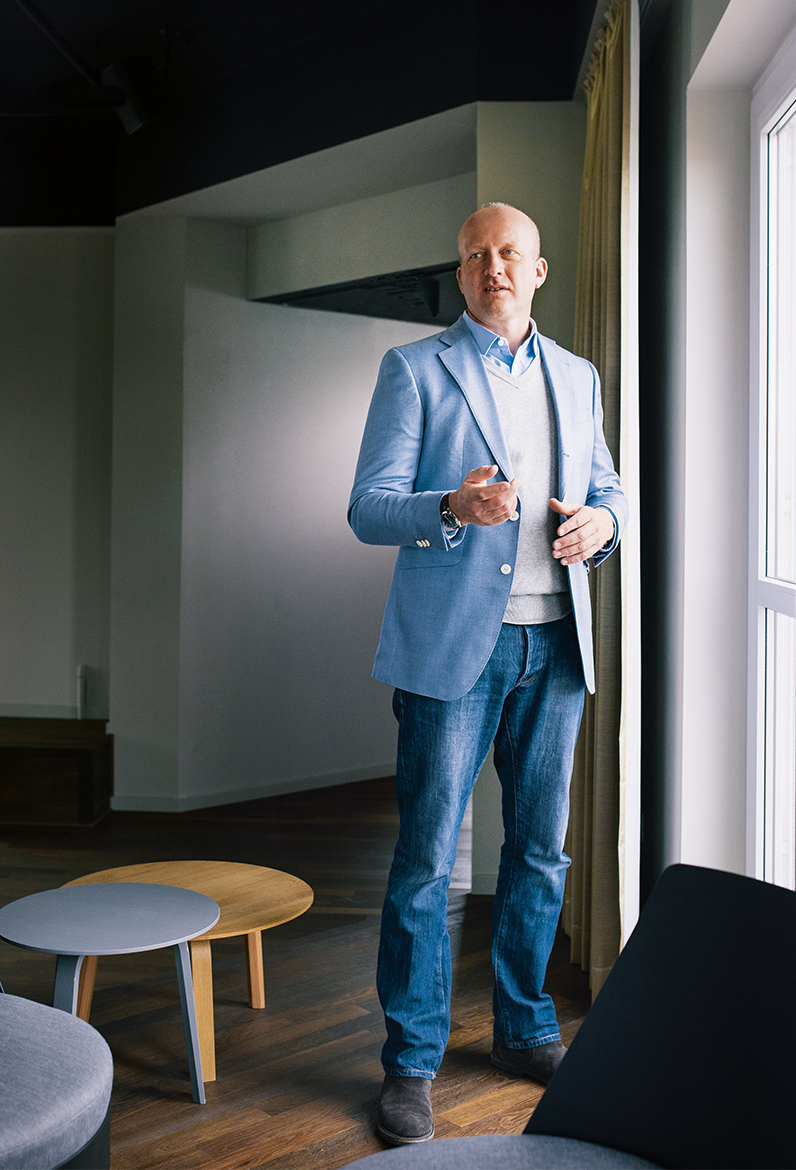Distribution has developed into a strong growth driver for ProSiebenSat.1 in the last few years. Conrad Albert is responsible for this area at Executive Board level. He explains why it pays off to play content on all channels, to focus on innovative technologies and thus to offer viewers entertainment everywhere and at all times.
Interview with Conrad Albert
What status does distribution have at ProSiebenSat.1?
Conrad Albert: To begin with, distribution is the backbone of our business model and has developed into an important growth driver. In the German-speaking region, we reach over 42 million TV households with cable, satellite, IPTV and terrestrial television alone. Our content can be received via PCs, laptops, tablets and smartphones for both linear and non-linear use. This also forms the basis for growth of our digital services. The more varied our distribution, the greater the reach that we can capitalize on through advertising.
So is it worth having a presence on all channels?
Conrad Albert: Of course. A few years ago, distribution still involved costs of a double-digit million amount. Unlike in many European countries or the US, we have to pay cable network operators to distribute our programs. Nevertheless, we have now established fair cooperation models and take a share in the revenues that the providers generate from the distribution of our HD channels. We have turned distribution into a highly profitable business with a double-digit profit margin. We expect to achieve distribution revenues of over EUR 150 million in 2018 – mainly from the distribution of our HD and pay channels as well as cable TV rebroadcasting rights. Every euro we earn from this is a stable euro that makes ProSiebenSat.1 less dependent on the cyclical advertising business.

High definition television is making a significant contribution to revenues. How strong is HD as a growth driver?
Conrad Albert: Together with the platforms, we expect to have up to nine million customers by 2018, which accounts to almost the double compared to 2014. Every other person with an HD-ready device would then be watching our stations in HD.
So HD has become a lucrative growth story, despite all the initial doubters.
Conrad Albert: Yes, it’s worth actively kick-starting new digital technologies. We’ve proved this again and again. ProSiebenSat.1 first broadcast high definition television in 2005, when there were only a few HD devices on the market. Moreover, we demonstrated the next stage of development in image quality at the Consumer Electronics Fair in 2014, when we streamed content live from our online video library maxdome in Ultra HD, also known as 4K.
»We expect to achieve distribution revenues of over EUR 150 million in 2018.«
CONRAD ALBERT
Which new distribution channels will be relevant in the future?
Conrad Albert: We have played an important part in ensuring that DVB-T, i.e. terrestrial television, has been maintained, and we’re supporting the development of the new standard DVB-T2, which can allow terrestrial HD reception from 2016. ProSiebenSat.1 was also the first private station group to offer a regular HbbTV service, and is present on new digital TV platforms like Zattoo and Magine, the entertainment portals of hardware manufacturers or services like Google Chromecast. We’re innovative and we actively seize the advantages of digitalization for our business.
What’s your favorite way to watch TV?
Conrad Albert: At home on the big HD screen. When I’m traveling, I watch my favorite shows with Joko and Klaas or “The Taste” live via the 7TV app as well as video-on-demand content via the maxdome app. Being able to access content anywhere and at any time has a major additional value for the user and offers great opportunities for the future of ProSiebenSat.1.<